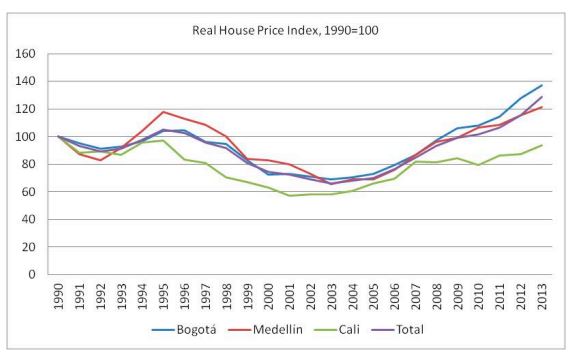Monday, June 8, 2015
House Prices in Colombia
Moreover, the report says that: “The exposure of households and the financial sector to house price developments continues to be low (…). The growth of mortgages in banks’ loan portfolios remains high, although it has slowed marginally to 17.3 percent in real terms in September 2014. Credit risks are, however, mitigated by a low overall stock of mortgages (about 10.5 percent of total loans), conservative provisioning, and lower housing finance interest rates, which are capped to the lowest rates prevailing for other type of lending. Banks have also been moving towards greater amounts of fixed rate funding for mortgages from variable rates, which should strengthen profitability in a low interest rate environment. Moreover, housing loans extended in recent years have shown less deterioration compared to those made in the past. At 17.5 percent of GDP and 28 percent of disposable income, household debt is moderate, and debt service-to-disposable income is low (9 percent). Although slightly higher than a year ago, LTVs remain low (52 percent).”
Posted by at 6:56 PM
Labels: Global Housing Watch
Subscribe to: Posts
